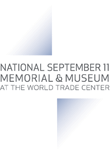|
|
 The National September 11 Memorial Museum at The World Trade Center Site.
 The Plan for Lower Manhattan > Memorial & Museum
 Memorial & Museum Memorial & Museum
The Memorial Mission
The Memorial Museum Mission Reflecting Absence, the design of the National September 11 Memorial & Museum, was created by architect Michael Arad and landscape architect Peter Walker, and selected from a design competition which included more than 5,200 entrants from 63 nations. The Memorial will consist of two massive pools with waterfalls cascading down their sides, to serve as a powerful reminder of the Twin Towers and of the unprecedented loss of life from an attack on our soil. The names of the 2,980 who were killed in the September 11th attacks in New York City, Washington, DC, Pennsylvania, and the February 1993 World Trade Center bombing, will be inscribed around the edge of the Memorial pools. An eight-acre landscaped Memorial Plaza filled with more than 300 oak trees will create a contemplative space separate from the sights and sounds of the surrounding city. The design is unique in its use of ecological considerations which exceed sustainability standards. As the competition jury explained their decision, "In its powerful, yet simple articulation of the footprints of the Twin Towers, "Reflecting Absence" has made the voids left by the destruction the primary symbols of our loss. It is a memorial that expresses both the incalculable loss of life and its consoling renewal, a place where all of us come together to remember from generation to generation." Complementing the Memorial, a state-of-the art Memorial Museum will offer visitors an opportunity to deepen their experience at the site. The Museum will help facilitate an encounter with both the enormity of the loss and the triumph of the human spirit that are at the heart of 9/11. Dynamic, interactive exhibitions including artifacts and personal effects; a resource center, contemplative areas, and innovative educational programming will convey stories of the victims and recount the experiences of survivors, responders, area residents, and witnesses. The Museum, designed by Davis Brody Bond, LLP will have its primary exhibition space below ground. The Museum will be accessed through an entry pavilion designed by Snøhetta. As visitors descend below the Memorial voids, they will reach bedrock, where they can approach the slurry wall and other remaining structures at the foundation of the site where the tallest buildings in the world, a triumph of human ingenuity and aspiration once stood.  Learn More |


